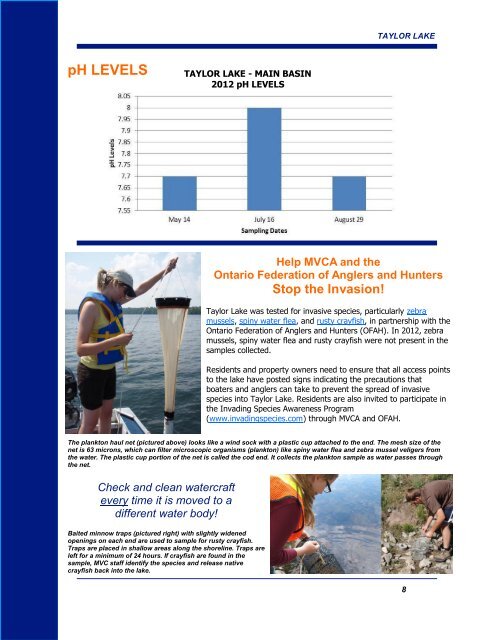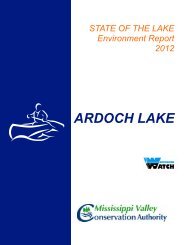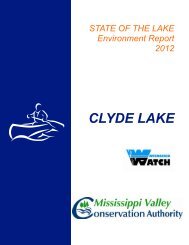TAYLOR LAKE - Mississippi Valley Conservation
TAYLOR LAKE - Mississippi Valley Conservation
TAYLOR LAKE - Mississippi Valley Conservation
Create successful ePaper yourself
Turn your PDF publications into a flip-book with our unique Google optimized e-Paper software.
<strong>TAYLOR</strong> <strong>LAKE</strong>pH LEVELS<strong>TAYLOR</strong> <strong>LAKE</strong> - MAIN BASIN2012 pH LEVELSHelp MVCA and theOntario Federation of Anglers and HuntersStop the Invasion!Taylor Lake was tested for invasive species, particularly zebramussels, spiny water flea, and rusty crayfish, in partnership with theOntario Federation of Anglers and Hunters (OFAH). In 2012, zebramussels, spiny water flea and rusty crayfish were not present in thesamples collected.Residents and property owners need to ensure that all access pointsto the lake have posted signs indicating the precautions thatboaters and anglers can take to prevent the spread of invasivespecies into Taylor Lake. Residents are also invited to participate inthe Invading Species Awareness Program(www.invadingspecies.com) through MVCA and OFAH.The plankton haul net (pictured above) looks like a wind sock with a plastic cup attached to the end. The mesh size of thenet is 63 microns, which can filter microscopic organisms (plankton) like spiny water flea and zebra mussel veligers fromthe water. The plastic cup portion of the net is called the cod end. It collects the plankton sample as water passes throughthe net.Check and clean watercraftevery time it is moved to adifferent water body!Baited minnow traps (pictured right) with slightly widenedopenings on each end are used to sample for rusty crayfish.Traps are placed in shallow areas along the shoreline. Traps areleft for a minimum of 24 hours. If crayfish are found in thesample, MVC staff identify the species and release nativecrayfish back into the lake.8




